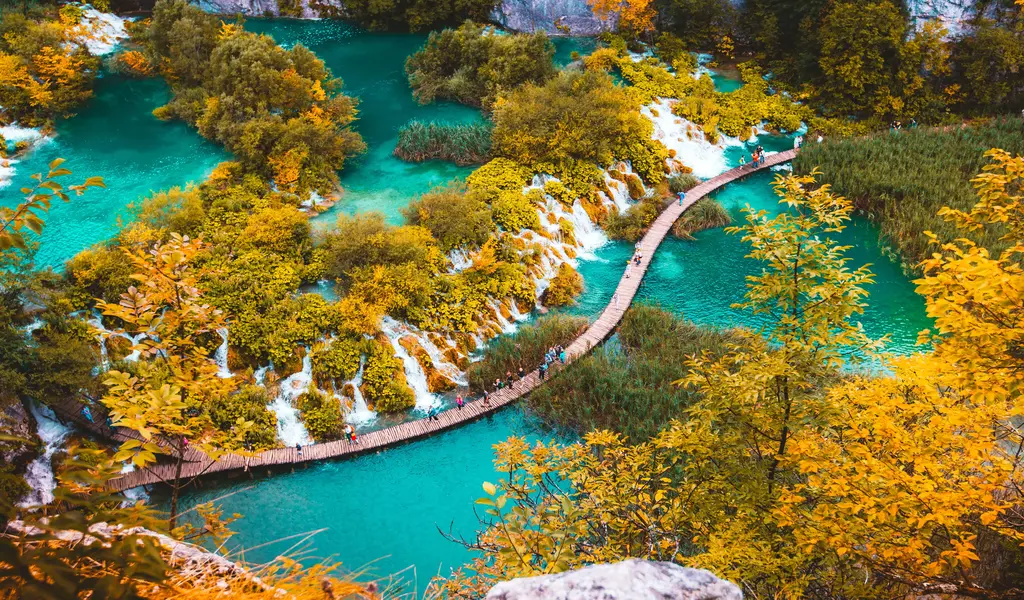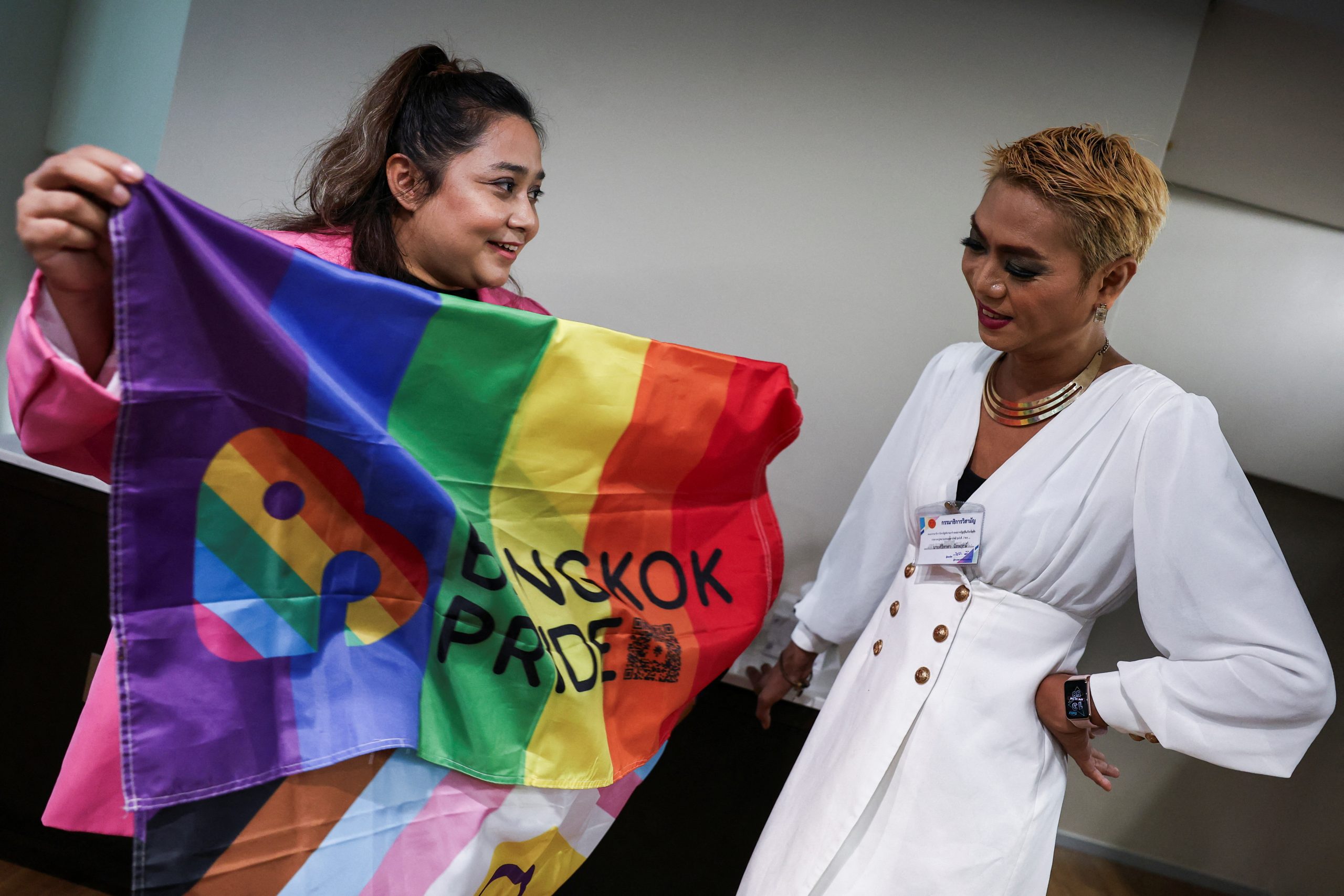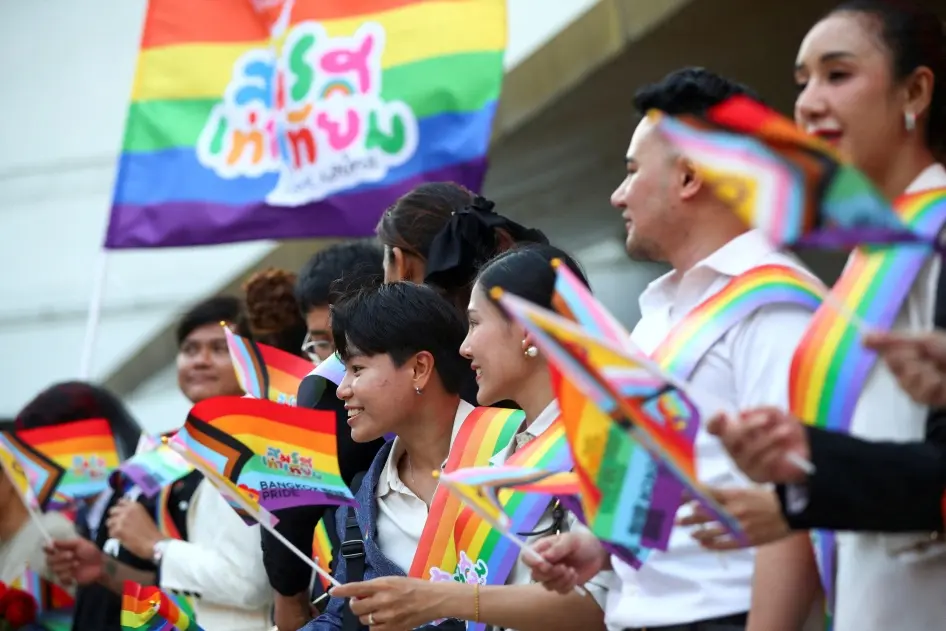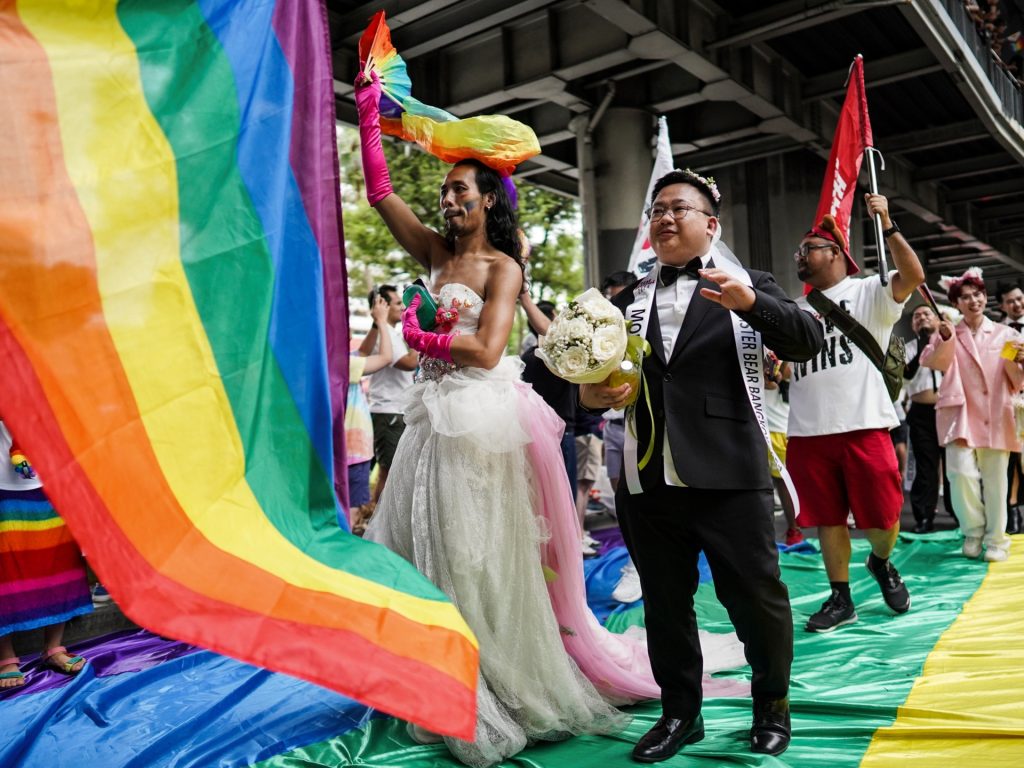Legal
9 Most Stunning Places In The World To Photograph

9 Most Stunning Places In The World To Photograph – What stunning places would a photographer not want to miss adventuring into in their lifetime?
We’ve compiled a list of both natural and man-made places to visit and photograph all over the world. Some may be close to you and some may be far. However, all of them are certainly worth the journey.
Rome, Italy
Do you love capturing historical landmarks that have stood the test of time and the elements? You’ll certainly want to visit the Colosseum, St. Peter’s Basilica, the Trevi Fountain, and Piazza Navona – all located in Rome, Italy.
These historical landmarks make for amazing photos with their captivating architecture.
Rome has an ancient history full of intrigue and war. And is known to be occupied by humans for approximately 5000 years.
In Rome, lights glisten on the water at night. What better way is there to capture the beauty than to roam these waters with a catamaran rental?
This also provides a wonderful opportunity to find new angles from which to take your pictures of this historic city.
Palau, Palau
Palau is an island country located in the western Pacific Ocean and has a vast array of marine life.
So, if underwater photography is your chosen niche, organize a snorkeling adventure in Jellyfish Lake. Here you can capture photographs of both the golden and moon jellyfish.
Follow the golden jellyfish (that need sun to survive) as they follow the sun.
The Rock Islands of Palau have also been known to capture a photographer’s keen eye. The vegetation-covered islands are dotted irregularly between bright blue water. You can explore and photograph them from every possible angle.
The islands’ mud is known to have healing properties too – don’t get your camera dirty though!
Reine, Norway
Reine, a fishing village in Norway, is the next location on our list. And for good reason!
The landscape consists of mountains upon mountains of lush greenery mixed with an icy terrain. It’s a truly stunning image, with the little village tucked up against the mountainside.
A more athletic photographer can hike to the top of these mountains to capture their shots, while others may want to mill around the village and capture their photos from lower down.
The Reine sunsets are stunningly colorful, so don’t worry about running out of daylight for your photography.
Keep your eyes on the skies between September and April to witness the magnificent green-and-pink-hinted Northern Lights.
Avenue of the Baobabs, Madagascar
You may need to take a moment to catch your breath if you travel to the Avenue of the Baobabs in Madagascar.
Grandidier’s baobabs line the dirt road between Morondava and Belon’i Tsiribihina in Menabe in western Madagascar. These ridiculously wide-trunked trees can live for hundreds of years.
One reason these trees are perfect for photography is that you can take photos from inside the trees! The inside of the baobab trunks is often large enough for a small home or office.
You may even be able to catch a glimpse of a few of the Madagascan animals. Many of them cannot be found anywhere else in the world, such as the wide-eyed Indri and the inquisitive Blue Coua jumping through the trees.
Zyangye Geopark, China
The Zyangye Geopark in China is something a little different and may interest the geology buffs in the photography game.
You can admire the rainbow colors and fascinating striations of these uniquely formed landforms. The Zyangye Geopark formed its unusual structure over years of freezing and thawing, in addition to wind and water erosion.
There are countless angles at which you can photograph these landforms, which appear to have a silky texture from a distance.
Travelers have recommended a sunset tour, when the natural beauty comes alive.
Lisse, Netherlands
We guarantee the sight of the Lisse gardens in the Spring will put a blissful smile on your face even before you raise your camera.
The bright colors of the fields of flowers come in pink, yellow, orange, blue, purple, and white – any color you can imagine, really.
There are intricacies and patterns in The Flower Bulb Region that a photographer’s eye can study and transform into art.
The order of blooming goes: daffodils in March, hyacinths in April, and tulips towards the end of April and early May.
Serengeti National Park, Tanzania
Are you a wildlife photographer looking for your next thrilling shot? The Serengeti National Park in Tanzania is a unique location for wildlife photography.
For example, you can witness a massive migration of wildebeest, zebras, and gazelles at the Serengeti National Park.
During this migration, the animals are hunted by predators such as lions, cheetahs, and crocodiles. This could be your chance to catch a stunning shot of these suspenseful natural encounters out in the open.
This vast array of safari life has been called legendary and incomparable by wildlife photographers.
This park is also the perfect place to bring your significant other along for a romantic getaway if you want to include them in your photography adventure.
Antarctic Peninsula, Antarctica
The Antarctic Peninsula in Antarctica is a very special (and very cold) adventure you must take.
Make sure you invest in a camera cage to keep your camera equipment safe in case you trip and fall on the varying landscapes. Grip that camera tightly!
This tranquil landscape provides breathtaking lighting and color contrasts. And panoramic or wide-angle shots can portray the enormity of the vista, as can utilizing human objects in your photos.
You can also capture the drifting icebergs (sometimes emitting eerie sounds). These have formed into a wide variety of bizarre shapes and sizes, and create captivating reflections in the icy waters.
Varanasi, India
Are you a photographer who has more of a knack for capturing bustling city life? Then, Varanasi is the right place for you to explore your talents.
The religious and spiritual culture in Varanasi, India, is truly vibrant. Some may describe it as chaotic, but maybe that’s the exciting energy in which you thrive!
Maha Shivaratri is one important traditional event in the Hindu culture that you will not want to miss photographing, next celebrated on February 18th, 2023.
This moving and dynamic festival of music, dancing, and chanting will test your observation and perception skills as a photographer.
Zoom in to witness the brotherhood between the devotees, adorning their detailed ancient cultural makeup and clothing. And zoom out to capture the temples decorated in bright colors, flowers, and lamps.
Related CTN News:
4 Ways to Make Your Home Feel Warm, Inviting and Welcoming
Benefits of hiring a Personal Injury Lawyer
International Sim Card for Travel and Other Life Hacks for Passionate Adventurers

Legal
Thai Court Amends Law to Allows Wives to Sue Husband’s Lovers

Thailand’s Constitutional Court has changed the Civil Code will allow women to sue their husbands’ lovers, male or female. The Constitutional Court found on Tuesday that Section 1523 of the Civil Code breached Section 27 of the constitution, which safeguards Thais’ rights and liberties regardless of gender.
The court directed that the verdict be enforced within 360 days.
Section 1523 of the Civil Code states that husbands can sue their wives’ lovers, and wives can sue other women who publicly display an adulterous connection with their husband.
Keirov Kritteeranon, secretary-general of the Office of the Ombudsman, stated that the Ombudsman had previously urged the court to rule on the legality of Section 1523, which allowed wives to suit only female lovers.
Husbands can now sue their wives’ boyfriends regardless of gender, and there was no requirement for any public declaration of an adulterous connection, he claimed.
Once enforced, Tuesday’s Constitutional Court order, according to the Ombudsman, will correct this imbalance.
Thailand Amends Marriage Law
Meanwhile, Thailand is set to become the first Southeast Asian country to recognise same-sex marriage, after its marriage equality law was passed in the Upper House on Tuesday and is now on its approach to being promulgated before going into effect in the coming months.
LGBTQ+ advocates rejoiced as the Senate voted 130-4 to pass the bill on its final reading, with 18 abstentions. They hailed the development as a win in their long struggle for equal rights.
When the advocates who had gathered at parliament on Tuesday to witness the Senate’s final reading and vote on the measure heard the outcome, they burst out in cheers.
They next went to authorities House, where the authorities had planned a celebratory reception for them later in the day. They then went to the Bangkok Art and Culture Centre, where the party lasted until late at night.
Prime Minister Srettha Thavisin, who is on sick leave due to Covid-19, congratulated them via Zoom call from Government House.
The new law will allow any two people aged 18 or older to register their marriage and obtain the same advantages and rights as heterosexual couples. The bill refers to married couples as “two individuals” rather than “a man and a woman,” and changes their legal status from “husband and wife” to “spouses.”
LGBTQ+ people from any country can legally marry in Thailand. When the bill goes into force, foreign same-sex married partners will be eligible for a spousal visa.
The law will be sent to the government for approval before being presented to the monarch.
It will take effect within 120 days of its publication in the Royal Gazette, making Thailand the third Asian country to accept same-sex marriages after Nepal and Taiwan.
Senator Kamnoon Sidhisamarn, spokesman for the Senate’s special committee evaluating the proposed law, called it a victory for equal rights campaigners.
“There is no reason for the Upper House to disagree with the judgement made by the House of Representatives,” he told reporters. He was referring to the legislation’s passage in the Lower House prior to its submission to the Senate for approval.
The battle for same-sex marriage legislation began 23 years ago. Tunyawaj Kamolwongwat, a Move Forward Party list-MP, said that the law’s passage on Tuesday signified the beginning of a new chapter in Thai history.
Source: Bangkok Post
Court Upholds Israel’s Ban on News Agency Al Jazeera
Legal
Thailand’s Senate Passes Landmark Marriage Equity Bill Legalizing Gay Marriage

Thailand’s Senate has approved a long awaited marriage equality bill on Tuesday, making the country the third Asian country to accept same-sex couples. The Senate approved the law 130-4 with 18 abstentions.
The marriage equality bill will be sent the palace for royal clearance. The marriage equality law takes 120 days to take effect after Royal Gazette publication.
LGBTQ+ advocates welcomed the proposal a “monumental step forward” because Thailand would be the first Southeast Asian country to legalise marriage equality. Thailand is popular with travellers due to its LGBTQ+ culture and tolerance.
“This would underscore Thailand’s leadership in the region in promoting human rights and gender equality,” the Civil Society Commission of marriage equality, activists, and LGBTI+ couples said.
Prime Minister Srettha Thavisin, who wore a rainbow shirt to commemorate Pride Month, joined thousands of LGBTQ+ revellers and activists in a Bangkok parade at the start of June.
The prime minister will open Government House to commemorate the bill’s passage. Pride supporters will march from Parliament to the prime minister’s office. Mr. Srettha, who has Covid-19, will join them online after taking several days off.
Deputy Prime Minister and Commerce Minister Phumtham Wechayachai anticipates June’s Pride Month to create approximately 4.5 billion baht in economic cash flow.

Pride Month in Thailand
On Saturday, Mr. Phumtham said the government under Prime Minister Srettha Thavisin is encouraging sexual diversity and working with the commercial sector to plan more Pride Month festivities to attract LGBTQ+ tourists.
He claimed it will increase the country’s trade potential by giving SMEs business expansion chances and adding soft power value.
Mr. Phumtham claimed Poonpong Naiyanapakorn, director-general of the Trade Policy and Strategy Office, told him Pride Month celebrations will make Thailand a “pride-friendly destination” for LGBTQ+ Thai and global consumers.
This would help the country become a regional tourism hub under the government’s “Ignite Tourism Thailand” initiative to enhance tourism in 55 “worth visiting” provinces.
He added that such festivals will support downstream industries like event planners, food and beverage companies, hotels, and transport services and disperse cash to local areas. Mr. Phumtham stated Thailand’s Pride Month began in 1999. Bangkok, Chiang Mai, Phuket, and Chon Buri host parades, festivities, and campaigns.
The Tourism Authority of Thailand (TAT) expects approximately 860,000 people to attend this year’s festival and contribute at least 4.5 billion baht for the economy. LGBT Capital estimates that the world’s LGBTQ+ population has US$4.7 trillion in purchasing power and Thailand’s sexually varied population has US$26 billion.
LGBTQ+ rights in Thailand are improving, but there’s still much to do. The LGBTQ+ community in Thailand is notably strong in Bangkok and Pattaya.
Strong legal recognition allows transgender people to change their names and titles. Many LGBTQ+ couples lack legal rights since same-sex marriage is banned.

LGBTQ+ rights in Thailand
Thailand is becoming more accepting despite these difficulties. LGBTQ+ rights are gaining favour. Activists want legal changes to guarantee equality.
Pride parades are becoming increasingly visible, demonstrating diverse acceptance. While challenges remain, LGBTQ+ rights in Thailand are improving as awareness and acceptance expand.
Legal
Protecting Your Designs: Intellectual Property Rights in the Jewelry Manufacturing Industry

The jewelry manufacturing industry is a vibrant and highly competitive sector where creativity and innovation are paramount. Designers invest significant time, effort, and resources into crafting unique pieces that appeal to consumers’ tastes and preferences. However, this industry faces a persistent challenge: the protection of original designs from imitation and unauthorized use.
Intellectual property rights (IPR) play a crucial role in safeguarding jewellery designs, ensuring that creators receive recognition and financial benefits from their work. This article delves into the various forms of intellectual property rights pertinent to the jewelry manufacturing industry and offers insights on how designers can protect their creations.
Understanding Intellectual Property Rights
Intellectual property rights are legal mechanisms that grant creators exclusive rights to their inventions, designs, and artistic works. These rights encourage innovation by providing creators with the means to control the use of their creations and to benefit financially from them. In the context of jewelry design, the most relevant forms of IPR are copyrights, trademarks, patents, and design rights.
Copyrights
Copyright protection extends to original works of authorship, including artistic creations such as jewelry designs. Under copyright law, the designer of a piece of jewelry automatically acquires the exclusive right to reproduce, distribute, and display the design upon its creation. This protection does not require registration, although registering the copyright with the appropriate governmental body, such as the U.S. Copyright Office, can provide additional legal benefits and evidence of ownership.
For jewelry designers, copyright protects the aesthetic aspects of a piece, such as the specific design, patterns, and artistic expressions. However, it does not cover the functional elements or the materials used. The duration of copyright protection varies by country, but it typically lasts for the life of the creator plus an additional 50 to 70 years.
Trademarks
Trademarks protect symbols, names, logos, and slogans that distinguish goods and services in the marketplace. For jewelry manufacturers, a trademark can cover the brand name, logo, or even a unique product line name.
Registering a trademark with the appropriate authority, such as the United States Patent and Trademark Office (USPTO), provides nationwide protection and the exclusive right to use the mark in connection with the specified goods or services.
A strong trademark helps consumers identify and differentiate a brand’s products from those of competitors, fostering brand loyalty and reducing the risk of confusion in the marketplace. It also provides legal recourse against counterfeiting and unauthorised use of the brand’s identity.
Patents
Patents protect new inventions and technical innovations. In the jewelry industry, this could include innovative manufacturing processes, unique mechanisms for adjustable or interchangeable jewelry, or novel materials and techniques. A patent grants the inventor the exclusive right to use, make, and sell the invention for a limited period, usually 20 years from the filing date of the patent application.
Obtaining a patent involves a rigorous process of proving that the invention is novel, non-obvious, and useful. For jewelry designers, the primary benefit of patent protection lies in safeguarding their innovative techniques and mechanical features, which can provide a competitive edge in the market.
Design Rights
Design rights specifically protect the visual appearance of a product, including its shape, configuration, pattern, and ornamentation. These rights are particularly relevant to the jewelry industry, where the aesthetic appeal of a product is a key selling point. In many jurisdictions, design rights must be registered to be enforceable, though some countries offer unregistered design rights that provide limited protection.
Registering a design right involves submitting detailed representations of the design to the relevant authority, such as the European Union Intellectual Property Office (EUIPO) for protection within the EU. Registered design rights typically offer protection for up to 25 years, subject to renewal fees.
Steps to Protect Jewelry Designs
- Document Your Designs: Maintain detailed records of your design process, including sketches, prototypes, and finished pieces. This documentation can serve as evidence of originality and ownership in case of disputes.
- Conduct Searches: Before launching a new design, conduct thorough searches to ensure it does not infringe on existing intellectual property. This can prevent legal issues and costly disputes.
- Register Your IP: Where applicable, register your copyrights, trademarks, patents, and design rights with the appropriate authorities. Registration enhances protection and provides legal advantages in enforcing your rights.
- Use NDAs and Contracts: When working with manufacturers, suppliers, and collaborators, use non-disclosure agreements (NDAs) and detailed contracts to protect your designs and outline the terms of use. ( Check out EJ: A Jewelry Manufacturer with NDA’s.
- Monitor the Market: Regularly monitor the market for potential infringements. This can involve online searches, attending trade shows, and staying informed about competitors’ activities.
- Take Legal Action if Necessary: If you discover an infringement, take prompt legal action to enforce your rights. This may involve sending cease-and-desist letters, pursuing litigation, or seeking alternative dispute resolution methods.
Challenges and Considerations
While intellectual property rights offer significant protection, there are challenges and limitations to consider. The cost and complexity of obtaining and enforcing IPR can be prohibitive, especially for small designers and startups. Additionally, the global nature of the jewelry market means that protections obtained in one jurisdiction may not be recognized elsewhere, necessitating international strategies for comprehensive protection.
Moreover, the fast-paced nature of fashion and jewelry trends can make lengthy registration processes impractical for certain designs. In such cases, relying on unregistered design rights or focusing on brand protection through trademarks may be more viable strategies.
Conclusion
Intellectual property rights are a vital tool for protecting the creativity and innovation that drive the jewelry manufacturing industry. By understanding and strategically utilizing copyrights, trademarks, patents, and design rights, designers can safeguard their creations, enhance their competitive edge, and ensure they reap the financial rewards of their ingenuity. As the industry continues to evolve, staying informed about IPR and adapting to emerging challenges will be crucial for sustaining success in the dynamic world of jewelry design.
People Also Reading:
Law Firm Chastised for Using OpenAI ChatGPT for Legal Research
Law Firm Chastised for Using OpenAI ChatGPT for Legal Research
-

 News3 years ago
News3 years agoLet’s Know About Ultra High Net Worth Individual
-
Entertainment2 years ago
Mabelle Prior: The Voice of Hope, Resilience, and Diversity Inspiring Generations
-

 Health3 years ago
Health3 years agoHow Much Ivermectin Should You Take?
-

 Tech2 years ago
Tech2 years agoTop Forex Brokers of 2023: Reviews and Analysis for Successful Trading
-

 Lifestyles3 years ago
Lifestyles3 years agoAries Soulmate Signs
-

 Movies2 years ago
Movies2 years agoWhat Should I Do If Disney Plus Keeps Logging Me Out of TV?
-

 Health3 years ago
Health3 years agoCan I Buy Ivermectin Without A Prescription in the USA?
-

 Learning3 years ago
Learning3 years agoVirtual Numbers: What Are They For?